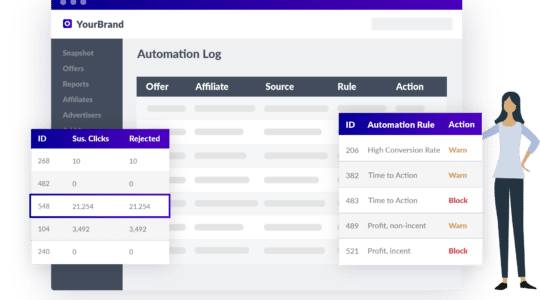
Technology has simplified so much of our lives these days… Especially our businesses. We are truly living in the “golden age” of technological entrepreneurship. The amount of free and competitively priced technology available to today’s businesses is insurmountable, meaning that the sky is the limit!
Equally significant is the amount of “untapped” technology within feature sets of existing solutions that you may not be taking advantage of. Today I wanted to focus on a blend of free technology and a feature set within the HasOffers console, that when combined, could deliver double digit conversion increases for your offers.
When it comes to optimizing your offer, Google Content Experiments represents a robust solution at zero cost. Backed by Google, and now incorporated into the Google Analytics platform, content experiments is a powerful tool that allows marketers of any size to construct rejuvenating and stimulating experiments for a business resulting in increased dollars directly to the bottom line.
While Content Experiments is a great tool, it is built for the masses, and does not address key needs specific to our performance marketing space. Let’s address some powerful combinations we’ve witnessed when combining the power of content experiments with the HasOffers’ “Goals” feature.
By building campaigns that combine the two technologies, you can benefit from advanced ROI goals that take both a macro and highly focused approach.
To “make this real,” let me give you a specific example:
Say you are in the business of generating Life Insurance leads. You need to collect a total of 30 fields (which need to contain the filters required by your buyers) to effectively monetize. With so many elements worthy of testing, the process can be a bit baffling, which can sometimes result in no action whatsoever.
While Experiments is great at illuminating which landing page and inner page flow is best at hitting the goal you’ve built within Analytics, if you were to stop here, you would be leaving far too much on the table. To fully maximize your profits, I suggest testing more variables using Multivariate-Offer Testing. As you are probably aware, traditional multivariate testing allows you to test a variety of different cosmetic combinations within one page such as swapping out headlines, submit buttons, CTA’s, etc. However, Google Content Experiments elected not to incorporate multi-variate testing into their tool. While this approach is not universally agreed upon, due to Google’s countless other successes, we can trust this decision was reached with driven data evidence to support it.
When you combine HasOffer’s “Goals” with Google Content experiments, we believe that you can achieve an end result that is better than the sum of its parts. There are several technology products which incorporate both of these solutions with an end result that not only tests different cosmetic combinations of one offer’s landing page, but when used with HasOffers, combines multiple offers into a rotated, goal oriented cluster (ad group) that will put two smart and powerful engines (Google & HasOffers), working together to increase your profit margin.
Okay, back to your Life Insurance lead generation objective. You have decided upon a goal within HasOffers to optimize for profit. Accordingly, you place your pixel on the “success page” of your offer and pass back data to your HasOffers console that details the amount of money you’ve been paid which will juxtapose to your payout and tell the HasOffers engine about your profit for that given transaction id.
You have sat with the team and discussed your target prospect at length, including potential reactions to various color schemes, models, banners, and more. You have created designs that test these differing elements and built a group of 4 landing pages that rotate the differences.
The look and feel appeal of your landing page is just the beginning of this optimization journey but let’s say you were to take it 1 step further and create 4 different form variations… One that asks only zip code on the homepage and utilizes geo specific data on the inside pages, and another that asks for 10 different fields on the home page, providing competing quotes in exchange. A final page that asks lifestyle choices about the individual (i.e. homemaker with kids or single city dweller), and then adjusts inner page creative accordingly.
The end result is that Analytics will steadily rotate the individual offer combinations to achieve the end goal of maximized profit, while HasOffers will rotate the different offers within that ad group (cluster) to do the exact same thing.
By the end of your hybrid multi-variate offer experiment, you will emerge with a clear cut winner as it pertains to landing page design, along with a specific winner in terms of offer type. From these findings, you can further segment that which worked and split test again.
By fusing these two technological solutions together, you will find yourself hitting bottom-line profit margins in a way that will allow you to bid more for your traffic and increase volume.
Author
Becky is the Senior Content Marketing Manager at TUNE. Before TUNE, she led a variety of marketing and communications projects at San Francisco startups. Becky received her bachelor's degree in English from Wake Forest University. After living nearly a decade in San Francisco and Seattle, she has returned to her home of Charleston, SC, where you can find her enjoying the sun and salt water with her family.



Leave a Reply
You must be logged in to post a comment.